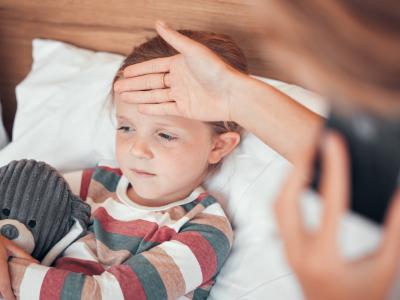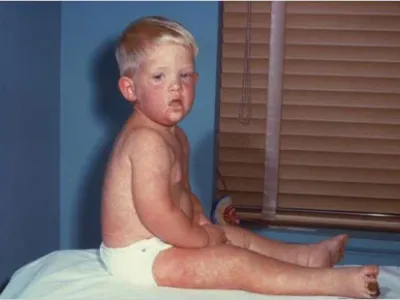Study shows COVID-19–induced myocarditis rare, linked to severe cases
Approximately 2.4 out of every 1,000 patients hospitalized with COVID-19 developed myocarditis, an inflammation of the heart muscle that typically follows viral infections, according to an international study published yesterday in the American Heart Association (AHA) journal Circulation.
When including possible myocarditis cases, the rate increases to 4.1 per 1,000 hospitalized patients.
The international study was based on records from 23 hospitals in the United States and Europe that admitted COVID-19 patients from February 2020 to April 2021. A total of 56,963 patient records were examined.
In total, 54 COVID-19 patients were diagnosed as having definite or probable acute myocarditis as determined via biopsies of the heart muscles or magnetic resonance imaging (MRI), and another 43 were identified as possible myocarditis cases.
The patients who developed probable or definite myocarditis were typically male (61%), non-Hispanic white (76.5%), and the average age was 38. No patients in the study were vaccinated against COVID-19.
Chest pain and difficulty breathing were the most frequent symptoms reported by patients who developed myocarditis (in 55.5% and 53.7% of cases, respectively), and 21 patients required inotropic support (the use of drugs to improve heart contraction) or temporary mechanical circulatory support. Having concurrent pneumonia was associated with higher mortality at 120 days post-diagnosis.
"At 120 days, estimated mortality was 6.6%, 15.1% in patients with associated pneumonia versus 0% in patients without pneumonia (P=0.044)," the authors wrote.
"This analysis indicates that, although rare, hospitalized patients with acute myocarditis associated with COVID-19 infection have a much greater need for intensive care unit admission, in up to 70.5% of the cases, despite the average age of the individuals in the study being much younger than expected at 38 years old," said co-senior study author Marco Metra, MD, a cardiology professor at the University of Brescia in Brescia, Italy, in an AHA press release.
Apr 11 Circulation study
Apr 11 AHA press release
COVID-19 inflammation—not SARS-CoV-2—may be behind loss of smell
Local COVID-related inflammation, rather than the virus itself, may cause the common early symptom of loss of smell, according to a postmortem study published yesterday in JAMA Neurology.
Johns Hopkins researchers led the multicenter study, which involved examining the olfactory bulb at the base of the brain of 23 deceased COVID-19 patients and 14 matched controls who died of other causes from Apr 7, 2020, to Sep 11, 2021.
The researchers used light and electron microscopy to look for any SARS-CoV-2 genetic material and assess cell structures and characteristics and the blood vessels and neurons within them. They also measured the number of axons in the neurons, which inform sensory perception and movement. Information about sense of smell and taste was derived from the medical records of three patients and from family interviews for the remainder.
Three of the 23 COVID-19 patients lost their sense of smell, while 4 had an impaired ability to smell, and 2 lost both smell and taste. No controls lost either smell or taste.
In a Johns Hopkins news release, lead author Cheng-Ying Ho, MD, PhD, said that COVID-19 decedents had more severe vascular injury and far fewer axons in the olfactory bulb—particularly those with diminished or total loss of smell, "strongly suggesting that these effects aren't age related and therefore, are linked to SARS-CoV-2 infection."
Ho said she was surprised that, despite nerve and vascular damage in COVID-19 decedents, most had no detectable SARS-CoV-2 virus particles in the olfactory bulb. "Our findings suggest that SARS-CoV-2 infection of the olfactory epithelium leads to inflammation, which in turn, damages the neurons, reduces the numbers of axons available to send signals to the brain, and results in the olfactory bulb becoming dysfunctional," she said.
In a JAMA Neurology audio interview, Ho said that long-term loss of smell occurs in about 1% of people and may be preventable. "If inflammation is the major cause of the injury in olfactory structures, it is possible that we may be able to use anti-inflammatory agent as the treatment," she said.
Apr 11 JAMA Neurol study and audio interview
Apr 11 Johns Hopkins Medicine press release
Avian flu strikes more poultry flocks in the Dakotas
The US Department of Agriculture (USDA) Animal and Plant Health Inspection Service (APHIS) reported more highly pathogenic avian flu outbreaks in North Dakota and South Dakota poultry, according to its latest update, which also adds information on recently reported outbreaks from officials in various states, including Colorado, Indiana, and Minnesota.
The new report from North Dakota involves a flock of 38 backyard birds in Stutsman County in the southeast, which now has seven outbreaks.
South Dakota has 3 more outbreaks, raising its total to 35. Two of the new outbreaks involve commercial turkey farms, one in Yankton County in the southeast housing 25,000 birds and one in Edmunds County in the north central region that houses 36,000 birds.
The outbreaks are part of activity involving the Eurasian H5N1 strain, which has struck wild birds and poultry in multiple world regions, including the United States, where poultry producers have now lost at least 24 million birds across 26 states.
USDA APHIS poultry outbreak page












